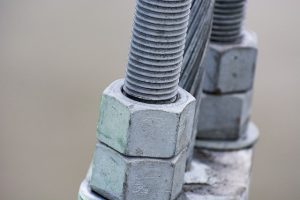
Have you ever tried to install a screw or bolt, only for the threads to become misaligned? A phenomenon known as cross-threading, it’s a serious problem that can leave the fastened parts loose and vulnerable to damage.
Threaded fasteners like screws and bolts are used to join multiple parts. They feature external threads that are designed to mate with the internal threads of a hole and/or nut. Cross-threading is a phenomenon in which the threads of a screw or bolt become misaligned with the mating threads. Fortunately, there are several things you can do to prevent cross-threading when installing fasteners, including the following.
Apply Perpendicular Force
One of the most important things you can do to prevent cross-threading when installing threaded fasteners is to apply perpendicular force. In other words, push the screw or bolt straight into the hole as you turn it clockwise.
If you push the threaded fastener at an angle — even a slight angle — it may become cross-threaded. The fastener’s threads may “jump” the threads of the hole or nut, resulting in this phenomenon. Applying perpendicular force by pushing the fastener straight will minimize the risk of cross-threading.
Clean Before Installing
Cleaning fasteners before installing them can help to prevent cross-threading. Cross-threading involves the misalignment of a fastener’s threads. If there’s dirt or debris on the threads, the threads may not catch. Therefore, cleaning the threads beforehand can reduce the risk of cross-threading.
Start By Hand-Tightening
You can avoid cross-threading by tightening the fasteners by hand first. If needed, you can then use a powered tool to finish the job.
Powered tools often apply an excessive amount of torque. All of this torque can cause the fastener’s threads to become misaligned with the hole or nut. By tightening the fastener manually and without a powered tool, you’ll expose it to less torque, which should reduce the risk of cross-threading.
Choose the Right Fastener
Another tip to prevent cross-threading is to choose the right type of fastener. Fasteners are available in different thread sizes. If the thread size of a fastener doesn’t match that of the hole or nut with which it’s used, it may become cross-threaded.
Fasteners made of strong, hard materials are also less likely to become cross-threaded than those made of softer materials. Carbon steel fasteners, for instance, are known for their strong and durable properties. They are stronger and harder than fasteners made of other materials, making them less likely to succumb to cross-threading.
